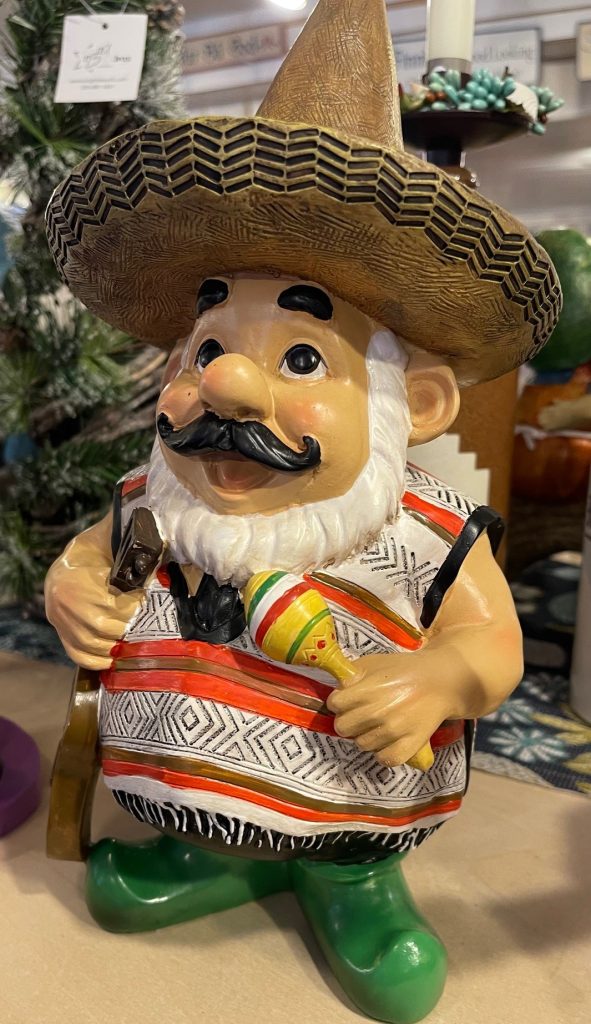
The dancing life sized Mexican mannequin adorned with a sombrero and bolero jacket made her giggle. He was tall, dark, and handsome with a jovial disposition. No matter how many times she entered this establishment, he turned his head, shook his maracas and swayed his hips from side to side, as if inviting her to dance.
Strewn around his feet were advertisements for a slew of elixirs, spirits, and alcoholic beverages. But, standing just a few feet from him, his twin brother with a blood red, thorn riddled rose in his mouth. He did not dance or turn his head to greet the patrons of the establishment.
For a moment, she was left wondering why this life sized mannequin, dressed to the nines, was the more serious of the duo. She imagined he would have a thing or two to say. Maybe his tightly sealed lips safeguarded a people’s history and tradition.
Maybe his refusal to charm was his silent objection to his comical portrayal. Maybe his sealed lips struggled to find the right words to convey his disappointment.
She did not know his thoughts but she presumed him to be a proud man, ready to remove his sombrero, extend an open hand and invite us all to learn more about his culture – foods, garbs, language, music, and traditions.
She believed he would welcome inquiries and genuine interest into the meaning of this day – Cinco de Mayo.
There are innumerable ways to acknowledge and appreciate the unique contributions from people all over the world. There are infinite opportunities to learn about one another through dialogue, food, and the exploration and preservation of our history.
And, it all begins with knowledge!
Cinco de Mayo is not the same as Mexico’s Independence Day, which is September 16th. The holiday celebrates the Mexican victory over the French at the Battle of Puebla, which took place on May 5, 1862.
A year prior, Mexican President Benito Juarez suspended payment of all foreign debts. In response, France invaded Mexico. Mexican soldiers were outnumbered two to one by the better-equipped French army, but in the town of Puebla, the Mexican force prevailed. The victory boosted the Mexican army’s morale and national pride.
The French went on to capture Mexico City and install Emperor Maximillian I as the ruler. In 1866, with political and military assistance from the U.S., the Mexican army expelled the French and captured and executed Maximilian I.
Juarez reassumed the presidency and declared that May 5, the anniversary of the Battle of Puebla, would be a national holiday.
The first Cinco de Mayo celebrations did not include margaritas – those were not invented until the 1940s. And consistently frosty beverages would not come until the invention of the frozen margarita machine.
Did You Know? More calls are made on Mother’s Day than any other day of the year. Reportedly, there are approximately 122 million calls made on the second Sunday of May every year.